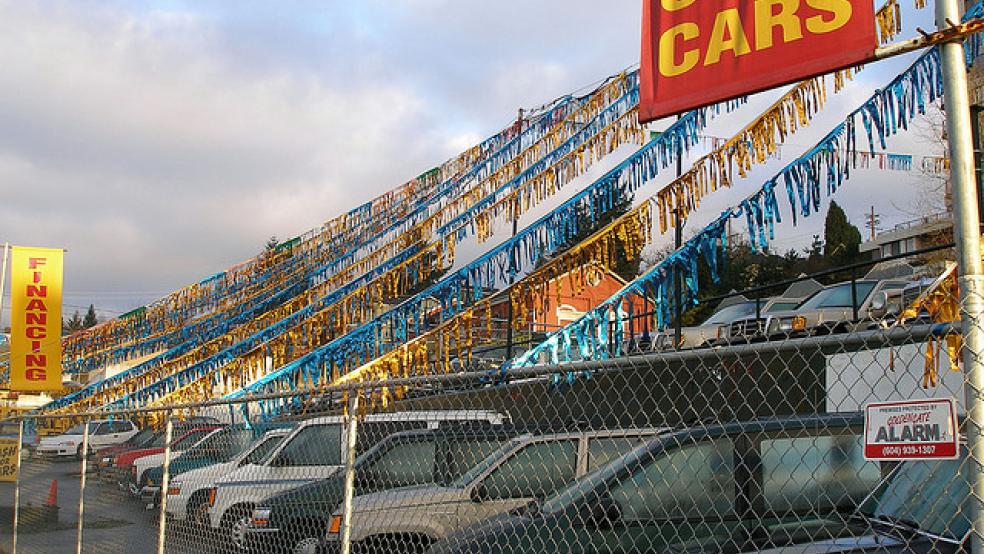It’s a great time to buy a pre-owned car. As more vehicles hit used car lots, consumers could see prices fall as much as 2 percent this year, according to automotive site Edmunds.com.
Though there’s potential to get a great deal, the buying process still has plenty of potential pitfalls: It’s not hard to pay more than you should or to drive home a costly clunker. Follow these steps to make the endeavor as pain-free as possible.
1. Do your homework. Before you set foot in a dealership, take a look at some top-notch car reviews to get a sense of what type of vehicle you want and what you can reasonably afford. Some good sites to start with are Edmunds.com, Kelley Blue Book, and TrueCar.
Since you’ll likely own the car for at least a few years, think about the future when deciding the type of vehicle you’ll buy. “What do you need the car for?” says David Bennett, AAA’s manager of automotive programs. “Think a couple of years in advance. Is your life going to change in the near future?”
Related: Why Used Cars Are Getting Less Dependable
2. Figure out how much the car will cost you. Visit your local credit union to get a quote on the car’s cost. Credit unions provide 44 percent lower interest rates for used car loans than traditional banks, according to a WalletHub report last year.
Then take that quote to the dealership to see if the financing department there can beat it. The average cost of a dealer loan in the fourth quarter of last year was 2.46 percent.
Focus on the total cost of the loan, rather than your monthly payments, and look for the shortest possible loan. Even if it’s got a lower rate, a 72-month loan is going to cost a lot more than a 36-month loan.
3. Vet the seller carefully. It’s safest to buy from dealers who have a lot to lose if something goes wrong, says Jason Lancaster, publisher of AccurateAutoAdvice.com and a former car sales manager. Franchise dealers with a licensed major manufacturer provide additional security because you can go to the manufacturer to put indirect pressure on the dealer. “Individual sellers aren’t regulated, and criminals aren’t worried about taking risks,” says Lancaster.
Also, individual sellers may not know a car’s full history. Last year 3.5 million cars for sale online had an unrepaired safety recall, according to Carfax. While many amateur sellers are legit – if unqualified – classified listings are also a haven for scammers. Listen to your gut: If you can’t see the car or the people selling it, don't buy it. If the deal is too good to be true, it probably is.
4. Investigate the car. Take every car you’re considering for a test drive. Use your typical route or a similar one to see if the car fits your needs, the AAA’s Bennett says.
Once you’ve narrowed the field to two or three cars, ask the seller for a vehicle report from Carfax or AutoCheck. You’ll need the vehicle identification numbers in order run the reports. Most dealers will provide the report for free, and if a seller won’t – that’s a red flag. Reports can help show whether claimed maintenance was done, if the car was in involved an accident or flood, or if the odometer was rolled back.
Related: 8 Things That Will Get Cheaper in 2014
Carfax says that half the cars flooded by storms return to the road, and it sees nearly 200,000 new cases of odometer rollback each year.
Have a mechanic do a pre-sale inspection to see if he turns up any issues. While older cars are becoming increasingly common on the roads (the average car on the road is more than 11 years old), a study out last month by J.D. Power & Associates found that the dependability of pre-owned cars declined last year for the first time in nearly 20 years.
Lancaster of AccurateAutoAdvice.com has one more piece of advice: Lift up the floor mats and sniff. If the car’s been in a flood, chances are there will be a telltale smell.
5. Negotiate carefully. If you’ve found an ad for the car you’re buying, bring it with you to the seller as a starting point. You can typically start negotiations at about 30 percent below the asking price and look for a compromise from there. Remember the final price of the car will likely include dealer fees and taxes that can push up the price further.
Carefully read the paperwork the seller provides to make sure it lists every feature and promise made regarding delivery and service. Without getting such items in writing, you’ll have no way to enforce what you were promised. Avoid dealer-installed options, which typically have high markups. If you want to add on a feature, you can probably get it installed yourself for less.
6. Sleep on your decision. Don’t take delivery on the spot. Go home and quietly consider the purchase. Walking away from the dealership gives you better negotiating power – as well as time to make sure you really want the vehicle without being in a high-pressure sales environment.
Top Reads from The Fiscal Times:




